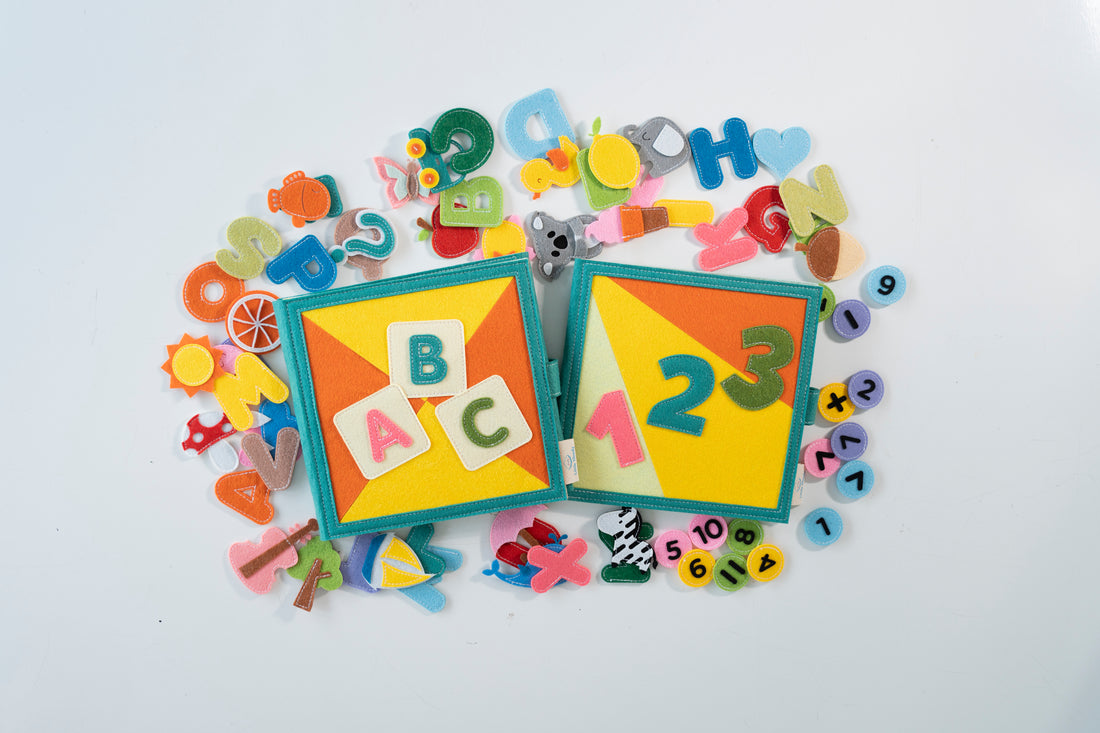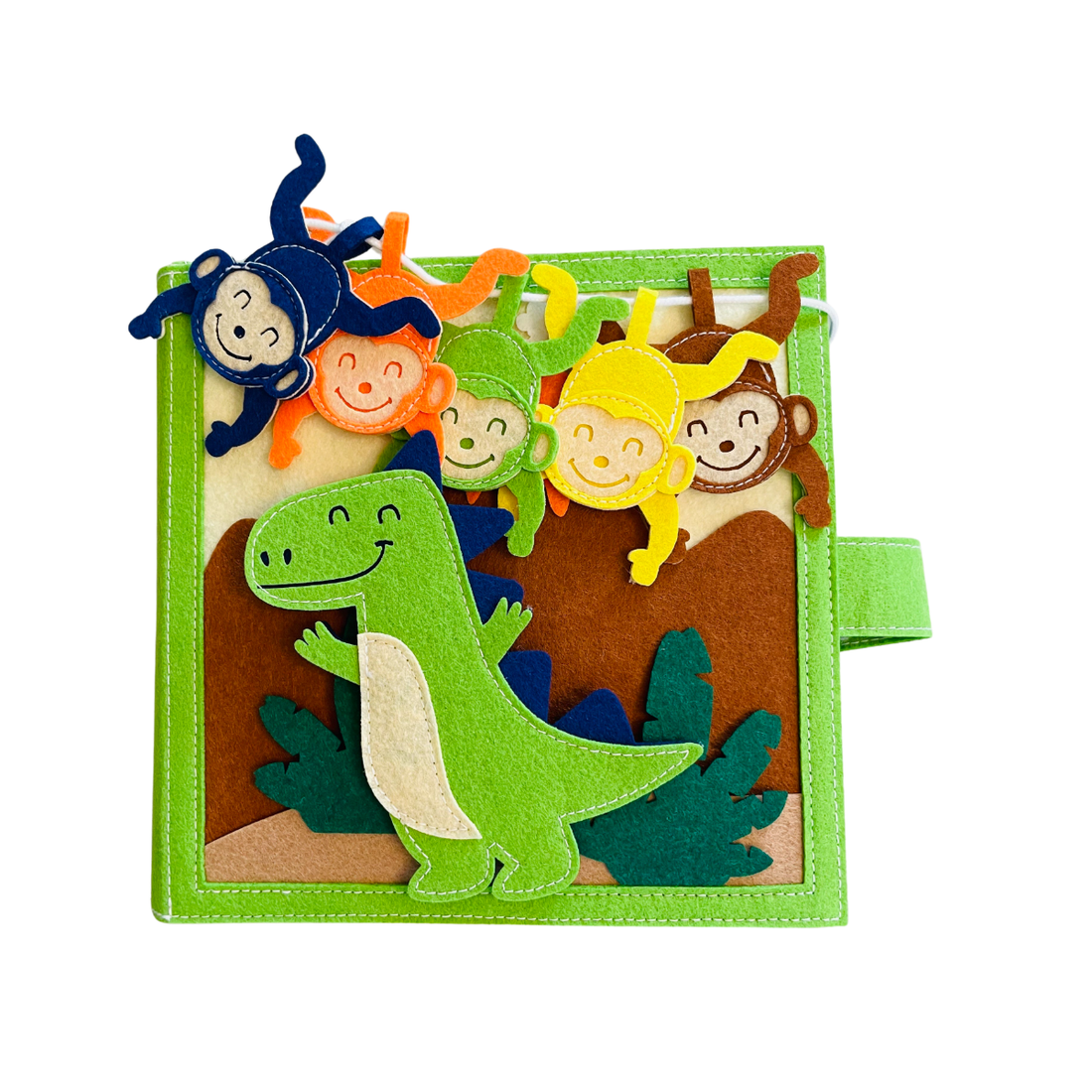Creating Fun and Educational Busy Books for Toddlers
When it comes to creating busy books for toddlers, you'll discover a world of possibilities that blend fun and education seamlessly. By incorporating interactive elements that cater to their developmental milestones, you can offer a dynamic learning experience that keeps their curious minds engaged. From sensory activities that captivate their senses to fine motor skill exercises that enhance coordination, these busy books hold the key to unlocking a world of discovery for your little one. So, are you ready to embark on this creative journey that sparks joy and learning in equal measure?
Benefits of Busy Books for Toddlers

Busy books for toddlers provide a hands-on way for them to develop fine motor skills and cognitive abilities. By engaging in activities like buttoning, zipping, and matching shapes, your child hones their dexterity and problem-solving skills. These interactive tasks help strengthen hand-eye coordination, preparing them for more complex tasks as they grow. Additionally, busy books offer opportunities for sensory exploration through different textures, colors, and shapes, stimulating your toddler's senses and encouraging curiosity.
Furthermore, these books promote language development as you discuss the various activities with your child. Describing colors, shapes, and actions helps expand their vocabulary and understanding of the world around them. As your toddler interacts with the busy book, they also learn important life skills such as patience, persistence, and creativity.
Essential Supplies for Crafting

When creating busy books for toddlers, having the right supplies is key to crafting engaging and interactive activities for your child's development. Essential supplies for crafting busy books include colorful felt or fabric for creating interactive pages that capture your toddler's attention.
You'll also need scissors for cutting out shapes and designs, along with strong glue to ensure that pieces stay securely attached. Utilize markers or fabric paint to add vibrant colors and details to your pages, making them visually appealing and stimulating for your child.
Don't forget to have a variety of buttons, zippers, and Velcro pieces to incorporate fun interactive elements that encourage sensory exploration and fine motor skills. Additionally, having a collection of stickers, ribbons, and beads can add texture and sensory experiences to your busy book pages.
Choosing Appropriate Themes and Concepts

To create engaging and meaningful busy books for toddlers, consider carefully selecting appropriate themes and concepts that cater to your child's interests and developmental needs. When choosing themes, think about what excites your toddler. Popular themes include animals, vehicles, shapes, colors, and daily activities like mealtime or bedtime routines. Selecting themes that your child is curious about can enhance their learning experience and keep them engaged for longer periods.
Additionally, consider your toddler's developmental stage when choosing concepts for the busy book. For younger toddlers, focus on basic concepts like colors, shapes, and numbers. As your child grows, you can introduce more complex concepts such as letters, simple words, and matching activities. Tailoring the themes and concepts to your toddler's age and abilities ensures that the busy book remains challenging yet achievable.
Incorporating Fine Motor Skills Activities

Consider incorporating fine motor skills activities into your busy books for toddlers to further enhance their cognitive development and hand-eye coordination. Including activities like buttoning, zipping, or lacing can help strengthen the muscles in their hands and fingers, preparing them for writing and other tasks that require dexterity. These activities also promote hand-eye coordination as toddlers learn to manipulate small objects within the pages of the busy book.
You can include pages with different textures for tactile stimulation, like soft fabric, rough sandpaper, or smooth plastic. This sensory experience not only engages their fine motor skills but also encourages exploration and curiosity. Adding activities that involve sorting items by size, shape, or color can further challenge their cognitive abilities while refining their grasp and coordination.
Engaging Cognitive Development Exercises
Enhance your toddler's cognitive development through engaging exercises that stimulate their problem-solving skills and critical thinking abilities. Introduce puzzles that require matching shapes or colors to enhance their cognitive skills.
Encourage your child to identify and sort objects by category, such as grouping animals by habitat or colors by shades. These activities help develop their categorization and classification abilities.
Another fun exercise is creating simple scavenger hunts where your toddler has to find specific items based on clues given. This activity enhances their memory and attention to detail.
Engage your child in interactive storytelling sessions where they can use their imagination to create new endings or characters for familiar tales. This exercise boosts their creativity and narrative skills.
Lastly, incorporate memory games like matching cards or objects hidden under cups to improve their recall and concentration. By incorporating these cognitive development exercises into your busy book, you can provide your toddler with a fun and educational experience.
Sensory Exploration Ideas for Busy Books

Immerse your toddler in a world of textures and sensations with sensory exploration ideas for busy books. Incorporating different textures like soft fabrics, rough sandpaper, bumpy buttons, or smooth ribbons on pages can engage your child's sense of touch. You can add elements like crinkly materials or squeaky toys to stimulate their auditory senses. Including scented materials such as scented felt or scratch-and-sniff stickers can introduce them to various smells, enhancing their olfactory experience.
Integrating interactive elements like hidden pockets filled with small toys or textured materials for your child to discover can enhance their tactile exploration. You can also attach pieces that make sounds when pressed, like a squeaker or a bell, to introduce cause and effect relationships. Encouraging your toddler to explore these sensory elements can help in developing their fine motor skills and cognitive abilities. By providing a multi-sensory experience, you can create a captivating and educational busy book that keeps your little one engaged for hours.
Creating Interactive Pages With Flaps and Pockets
To enhance your toddler's engagement with busy books, incorporate interactive pages featuring flaps and pockets for a hands-on exploration experience. Flaps and pockets add an element of surprise and excitement, making the learning process more interactive and enjoyable for your little one. You can create flaps that reveal hidden pictures, numbers, letters, or shapes when lifted, encouraging your child to actively participate in uncovering the hidden surprises.
Pockets provide a fun way to store small interactive pieces like felt shapes, mini flashcards, or small toys that your child can take out and play with as they explore the busy book. This tactile experience helps improve your toddler's fine motor skills and hand-eye coordination while keeping them engaged for longer periods.
Moreover, flaps and pockets can also be used to create matching games, hide-and-seek activities, or storytelling prompts within the busy book, sparking your child's imagination and creativity. By incorporating these interactive elements, you can make learning a fun and hands-on adventure for your toddler.
Personalizing Busy Books for Your Child
When personalizing busy books for your child, consider incorporating elements that cater to their interests and learning style. Think about what excites them – whether it's animals, vehicles, colors, or shapes – and tailor the activities in the book to align with these preferences.
For example, if your child loves animals, include pages with different textures to represent fur, feathers, or scales, along with corresponding animal sounds for a sensory experience.
Additionally, take into account your child's learning style. If they're more visual learners, opt for bright and colorful images with clear labels. For hands-on learners, include interactive elements like zippers, buttons, or Velcro pieces that they can manipulate.
You can also customize the busy book based on their developmental stage, incorporating activities that challenge their growing skills.
Tips for Making Busy Books Durable

For increased longevity, reinforce busy book pages with sturdy materials such as laminated cardstock or clear vinyl to prevent wear and tear. These materials are durable and easy to wipe clean, making them ideal for busy little hands. Additionally, consider using strong stitching or binding methods to secure the pages together, ensuring they can withstand the rigors of toddler play.
To further enhance durability, laminate any paper elements like flaps or interactive pieces to protect them from ripping or wrinkling. This simple step can significantly extend the life of your busy book. When attaching Velcro or snaps for interactive components, reinforce them with extra stitching or adhesive for added strength.
Another tip for making your busy book last longer is to store it properly when not in use. Keep it in a cool, dry place away from direct sunlight or moisture to prevent damage. By following these tips and investing a little extra effort into durability, you can ensure that your toddler's busy book remains a cherished and long-lasting educational tool.
Frequently Asked Questions
Can Busy Books Help Improve a Toddler's Social Skills?
Busy books can enhance a toddler's social skills by promoting interactive play and communication. They offer opportunities for sharing, taking turns, and engaging in cooperative activities, fostering valuable social interactions that support development.
Are There Any Safety Concerns With Busy Book Materials?
When choosing busy book materials, always prioritize safety. Watch out for small parts that could pose a choking hazard and opt for non-toxic materials. Regularly inspect the book for wear and tear to ensure your child's safety.
How Can Busy Books Be Used to Promote Language Development?
To promote language development, encourage interaction with busy books. Point to and name objects, describe colors, shapes, and textures, and ask questions that prompt verbal responses. Make it a fun and engaging learning experience for your toddler.
Can Busy Books Aid in Developing a Toddler's Emotional Intelligence?
Busy books can aid in developing a toddler's emotional intelligence by incorporating activities that teach empathy, self-regulation, and social skills. These interactive tools help children identify and manage their emotions in a fun and engaging way.What Age Range Is Ideal for Introducing Busy Books to Toddlers?
You should introduce busy books to toddlers around 18 months to 2 years old. This age range typically shows curiosity and fine motor skills development, making it an ideal time to engage them with interactive learning activities.
In conclusion, creating fun and educational busy books for toddlers is a rewarding way to engage their developing minds and skills.
By incorporating interactive activities, choosing appropriate themes, and personalizing the content, you can provide a stimulating learning experience for your child.
Remember to use durable materials and proper storage techniques to ensure that the busy book remains a cherished and effective educational tool for years to come.
Happy crafting and learning with your little one!






























